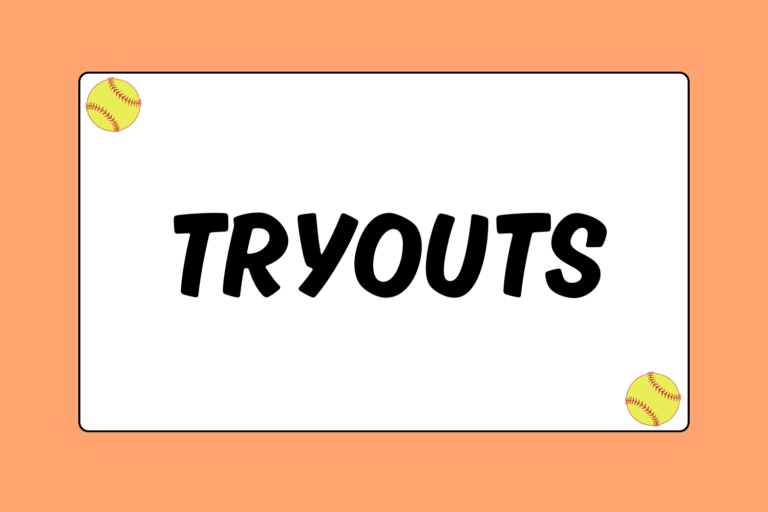In softball, one of the most common offensive plays you’ll see is a sacrifice bunt. With less than two outs on the board and at least runner on base, a sacrifice bunt is a guaranteed way to advance a runner if it’s executed correctly.
The defense not only needs to know when to expect it, but also how to defend against it. This guide will explain the proper bunt defense, position-by-position, so you’ll always be ready to get an out.
Corners Crash
The first and third basemen crash towards the plate whenever the batter squares around. They should sync their crashes with the pitcher’s motion, walking into their stances and continuously creeping in towards the plate. Their feet should never be planted.
Since the corners are crashing and the catcher will pounce at the ball, there needs to be communication as to who will field it. Just remember, if you’re in on the play and you think you’ve got it, call it out and take it. Hesitation will only give up an out.
Depending on how the ball is bunted, there are a few tricks you can use to be quicker at fielding it:
- The ball is not moving: This is one of the only times you can field the ball with your bare hand. While moving, field the ball inside of your glove-side foot with your bare hand, and as you are stepping through with your throwing-side foot, release the ball.
- The ball is rolling slowly: If the ball is rolling slowly, scoop the ball up between the outside of your glove’s pocket and your throwing hand. This virtually eliminates the ball’s transfer time from your glove to your hand. If you aren’t comfortable with this, field the ball regularly.
- The bunt is hard: Field the ball regularly and make an accurate throw.
Just remember to keep your throws on-target and towards the inside of the bag. This will keep the receiver safe from the runner’s path.
Second Baseman Covers
Since the first baseman crashes towards the plate, the second baseman’s responsibility is to cover first. However, the second baseman cannot leave early! Doing this will leave a huge hole to the right of second base.
Hot Tip: Creep Over
Whether you are the second baseman or the shortstop, you can creep towards the base you are covering while the pitcher is mid-motion. What you want to do is “smooth the dirt out” in front of you with your cleats, sweeping the dirt from left to right. But, as you “smooth it over,” you’re discretely sneaking over there.
Doing this is less blatant than walking over to the base, and it will not give away your strategy to the batter. But be careful! If she sees you doing this, she could easily pull the bat back to swing away, and aim to hit through the hole you’re creating.
Shortstop Creeps
The shortstop’s duty depends on where the runner is:
- Runner on first base: The shortstop covers second base.
- Runner on second base: The shortstop covers third base. This situation is a bit trickier, though, because there will be a foot race between her and the runner. If the shortstop gets a slow jump to third, she might get beat — she needs to time it correctly
Outfielders are Backups
On the bunt, all three outfielders will creep in towards the dirt with the pitcher’s motion. But be careful! If you creep in too much, you open up the outfield for a big hit. If you don’t creep in enough, you won’t be able to catch a weak pop-up or reach the infield in time to be an effective back-up. Here are the back-up duties for each outfielder:
- The right fielder backs up first base: If the throw happens to get past the first baseman, it’s the right fielder’s job to prevent the runner from gaining extra bases.
- The left fielder backs up the base where the lead runner is headed: The left fielder moves depending on where the runners are. If there is a runner at first base, the left fielder needs to angle herself to back up the throw to second. If there is a runner on second, she’ll back up the throw to third.
- The center fielder looks over second: The center fielder’s job will differ between teams. More often than not, though, the center fielder’s job is to protect second base. If there is a runner on first base, the second baseman goes to first base and the shortstop goes to third, leaving second base unoccupied. The batter may try to run from the plate to second base, thinking the defense’s attention will be on the lead runner. Be the reason her assumption was wrong!
Pitcher & Catcher

The catcher has the best eyes of the infield, she needs to be calling out the plays. If there is a play at first base, she should try to hustle down the line to back up the throw. Of course, if she can field the bunt, she has just as much priority as the corners. She also needs to be ready to sell out on a pop-up!
Dare Her to Square
Bunt defense is routine. The corners crash and the second baseman and shortstop should creep up from the baseline. Meanwhile, the dugout should keep their eyes on the lead runner. The play is always live if there are less than two outs, so don’t hold onto the ball and give a runner motivation to take an extra base. Get the ball back in the pitcher’s circle immediately, and if you see the batter square, be ready! Expect a bunt, but if she squares too early, also be prepared for the fake bunt. The key is communication — if you can work together and get an out, it’s a successful bunt defense!






